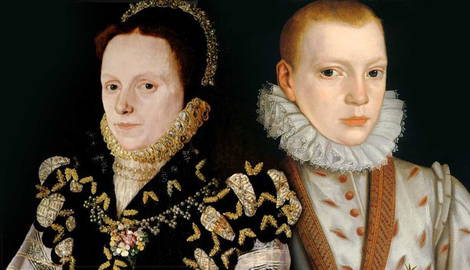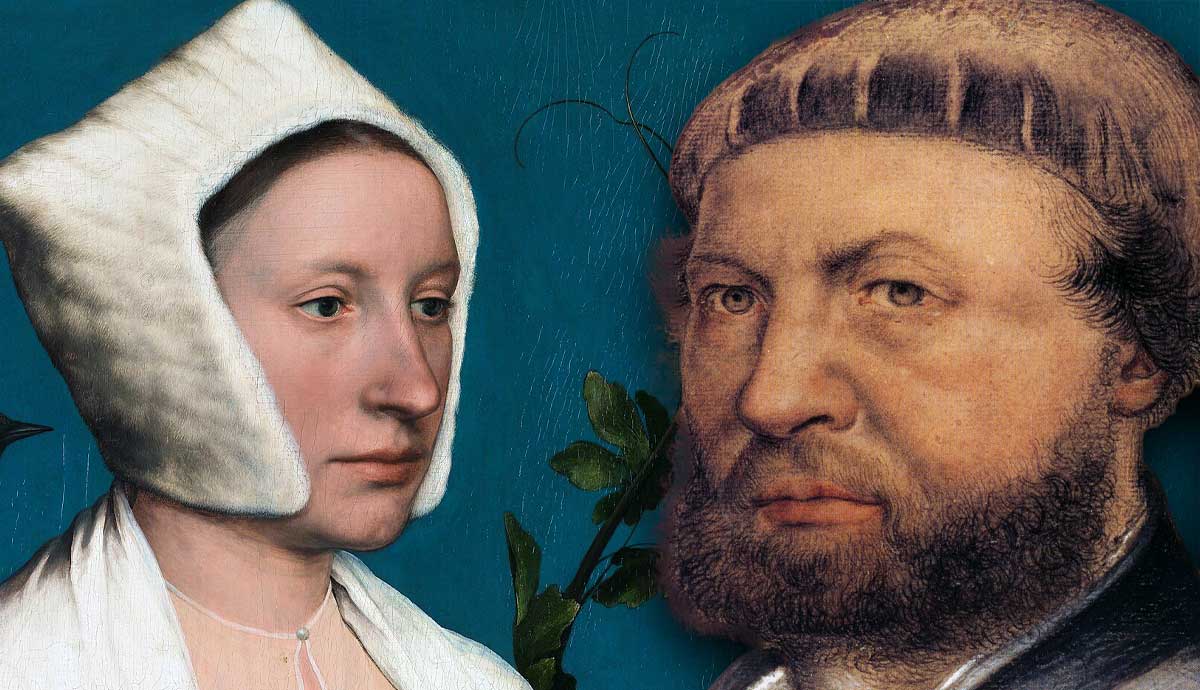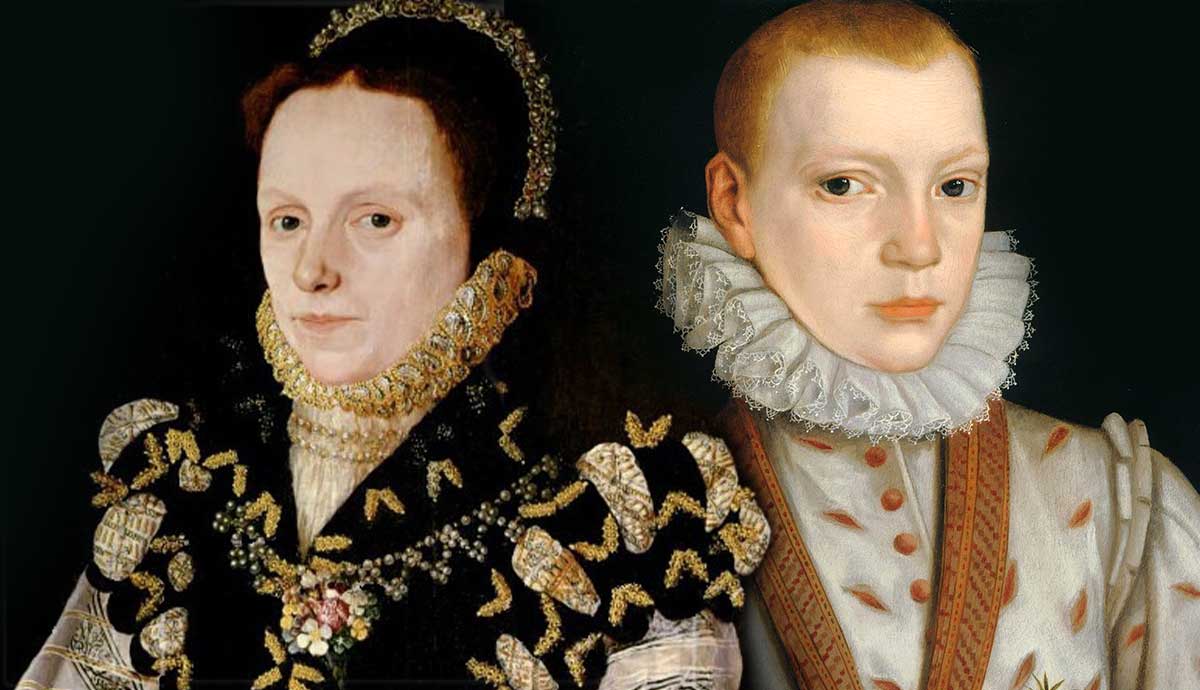
In his book published in 1969, The English Icon, Sir Roy Strong, then director of the National Portrait Gallery in London, proposed assembling a series of similar works and attributing them to a mysterious “Master of the Countess of Warwick”, named after a Lady portrayed in one of this Master’s iconic paintings.
But what if the master behind these works was actually a woman, an artist of the Tudor period by the name Levina Teerlinck?
The Mysterious “Master of the Countess of Warwick”
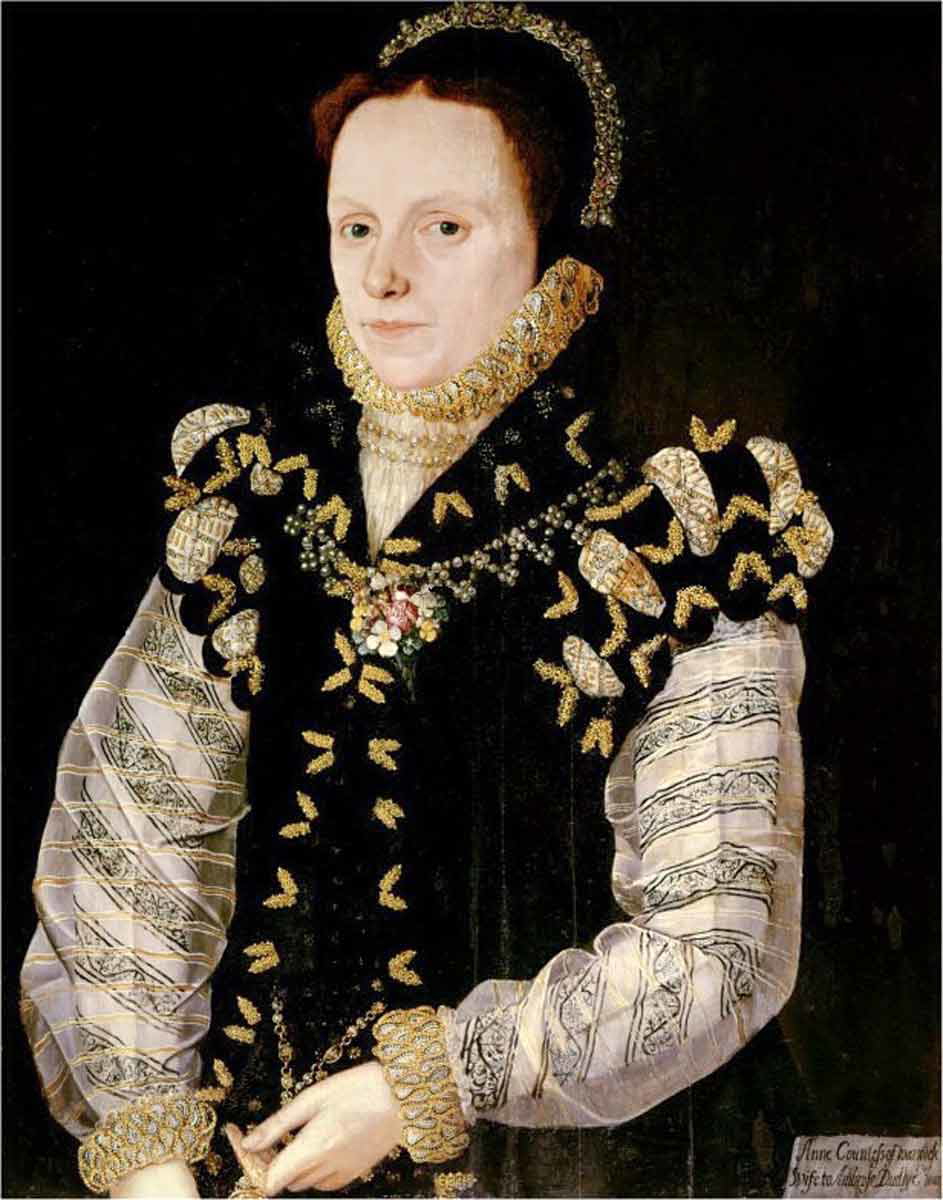
Since then, the identity of this Tudor painter active in England during the 1560s and 1570s has remained an enigma. On the occasion of an exhibition entitled “Tudor Mystery: Master of the Countess of Warwick” held from February 4 to May 8, 2023, at Campton Verney, England, the name of Arnold Derickson, a former apprentice of Hans Eworth, active between 1549 and 1603, has been proposed.
However, this attribution remains highly speculative. Derickson’s name was put forward largely by default, as he was one of the few English artists of some reputation during that time. Yet, no documentary or material evidence substantiates this claim. Moreover, the length of Derickson’s career renders the hypothesis rather implausible: he was active into the 1590s and reportedly died in 1603, whereas no works attributable to the Master of the Countess of Warwick are known beyond the mid-1570s.
The Case for Levina Teerlinck
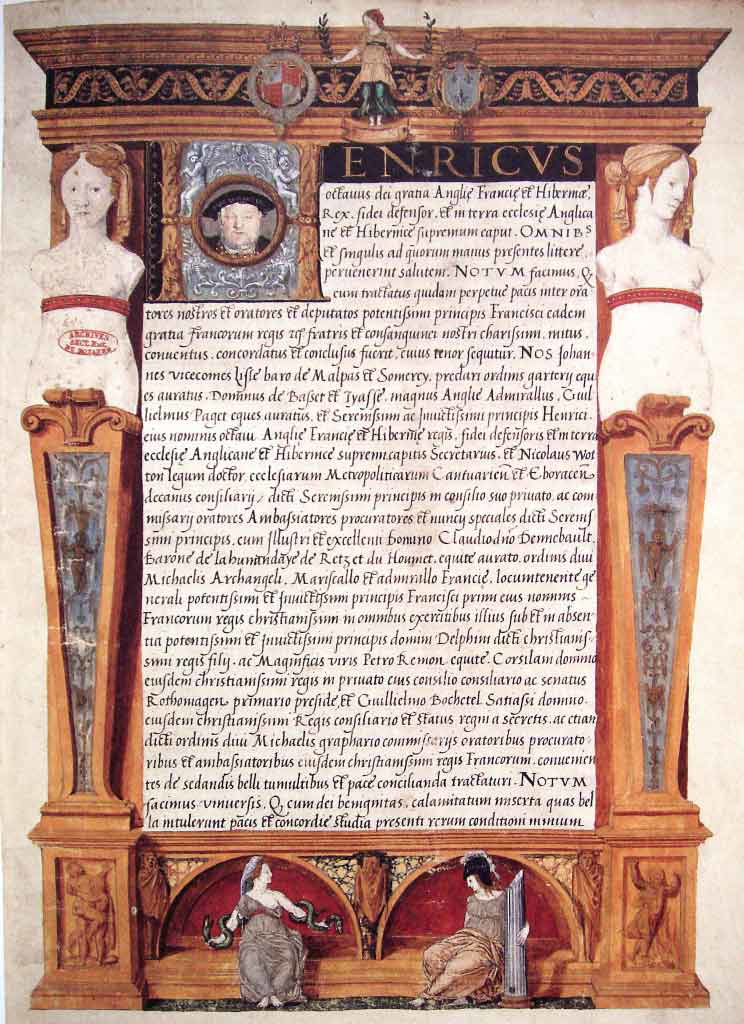
In a recently published two-volume fictionalized biography, I proposed that the “Master” should in fact be identified as “Mistress” Levina Teerlinck (1520–1576). Born in Flanders, the daughter of the renowned illuminator Simon Bening, Levina Teerlinck settled in England in 1545 and remained there until her death in 1576.
Long dismissed as a mediocre artist, her reputation deserves reassessment for several reasons:
- Her illumination of the “Treaty of Ardres” between France and England in 1546, preserved in the French National Archives, attests beyond doubt to her artistic skill.
- The few illuminations and miniatures attributed to her have often been done so tentatively, generally under the assumption that she was incapable of producing works of distinction.*
- Levina Teerlinck was granted a royal pension by Henry VIII, which exceeded that of Hans Holbein the Younger, the late court painter she succeeded. This pension was renewed under Edward VI, Mary I, and Elizabeth I. In fact, Elizabeth I confirmed it to her not merely “at pleasure” but explicitly “for life.”
- The celebrated Italian artist Giulio Clovio (1498–1578), nicknamed the “Michelangelo of miniature,” praised one of her portraits as “the most marvelous thing one could see”.
*For the past fifteen years, several art historians have tried to rehabilitate Levina Teerlinck, but without considering that she could be the “Master of the Countess of Warwick”. These notably include by chronological order: Susan E. James; Melanie V. Taylor; Louisa Woodville; Mykaila R. Imhoff; Victoria Chandler Tait.
Further Evidence Supports the Identification
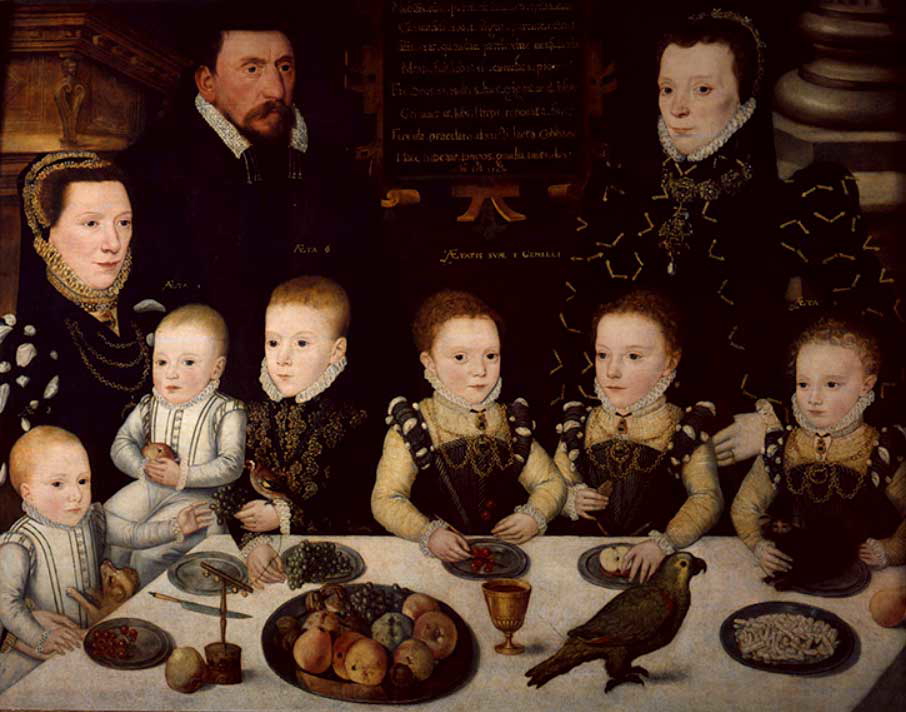
The last identified work of the Master of the Countess of Warwick dates from 1576, the year of Levina Teerlinck’s death. As a royal pensioner and the wife of a Flemish nobleman serving in the monarchs’ personal guard (the Gentlemen pensioners), Levina Teerlinck belonged to the same aristocratic milieu from which many of the Master’s sitters were drawn. These included Baron Thomas Wentworth (also Levina’s landlord); Elizabeth Fitzgerald (Lady Clinton); Susan Bertie, Duchess of Kent; Helena Snakenborg, wife of William Parr and Marchioness of Northampton; as well as the members of the Windsor and Brooke-Cobham families.
Most compelling is Levina Teerlinck’s connection to William Brooke, 10th Baron Cobham. The Master of the Countess of Warwick painted in 1567 a celebrated group portrait (see above), including notably William Brooke, his wife Frances Newton, and their six children gathered around a table.
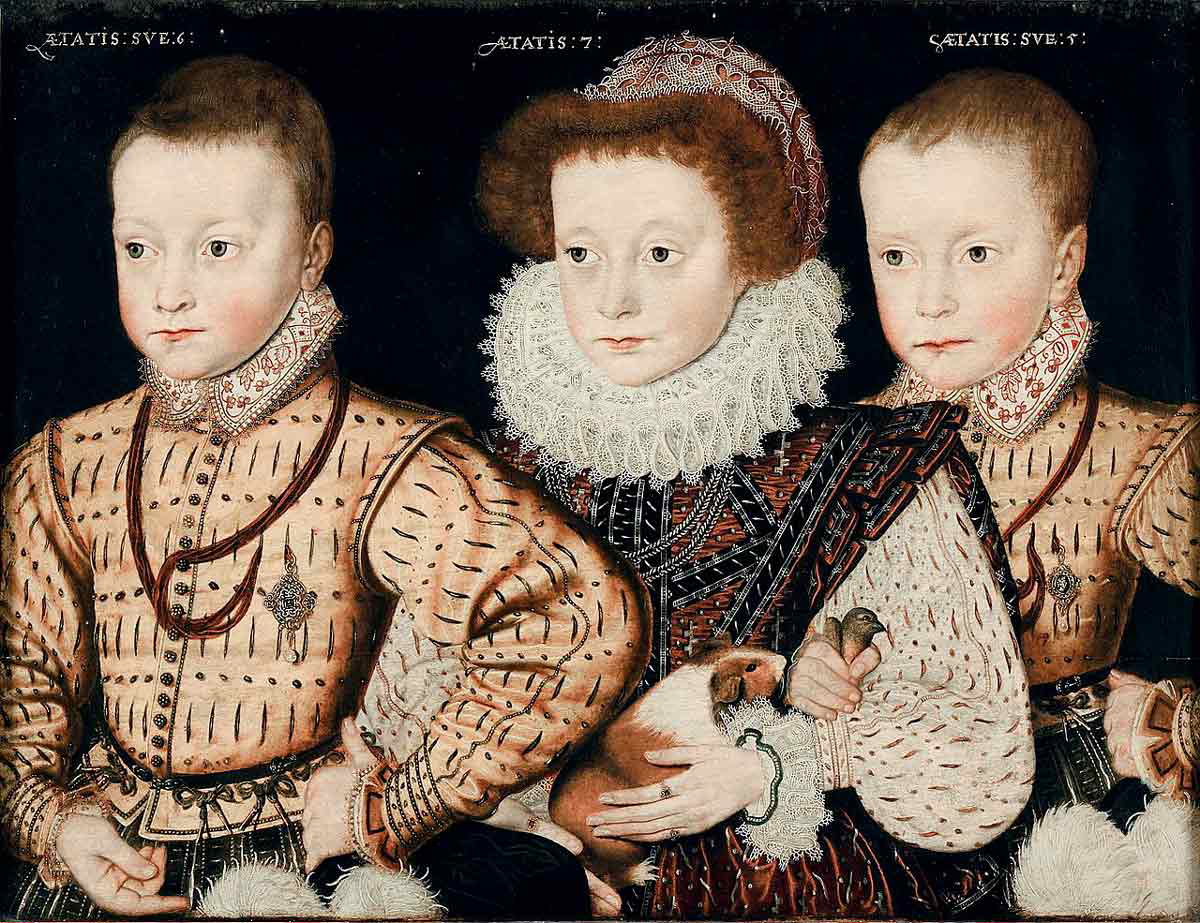
Alongside this work (and its 1573 variant with a seventh additional child), at least five further paintings by the Master of the Countess of Warwick include portraits of members of the Brooke family:
- A 1570 portrait of three children with a guinea pig. These children had not been identified before, but they are: Margaret, 7; Henry, 6; and William, 5.
- A 1570 depiction of four card-players, featuring William Brooke and William Cecil/Lord Burghley, Elizabeth I’s Secretary.
- A painting of four children making music. The year and the children had not been identified
before, but it was realized in 1573, and the children are: Margaret, 10; Maximilian, 12; Henry,
9 (depicted as 12); and William, 7. - A 1576 portrait of Maximilian Brooke, the eldest son, at the age of 15.
- A 1576 portrait of Henry Brooke, later 11th Baron Cobham, at the age of 12.
These commissions testify to a sustained relationship of trust and proximity between the Brooke family and the artist. From her side, since her arrival in England, Levina Teerlinck was closely associated with this family. To cite but a few examples:
- In 1545, she received a pension from Queen Catherine Parr, Henry VIII’s sixth wife, whose close maid-of-honor was Elisabeth Brooke, sister of William Brooke. Elisabeth was most certainly represented posthumously, sitting in the 1567 family portrait.
- In 1547, Levina Teerlinck gave birth to her only son, Marcus in Calais, then governed by George Brooke, 9th Baron Cobham, father of Elisabeth and William Brooke.
- Levina’s husband, George Teerlinck, joined the royal guard of the Gentlemen pensioners in 1547 and served until his death in 1578. His captain from 1550 to 1553 was William Parr, husband of Elisabeth Brooke. In 1560, Henry Brooke, another of Elisabeth’s brothers, also entered the guard.
- Levina Teerlinck’s first recorded New Year’s gift to Queen Elizabeth I in 1559 was a miniature portraying the queen with “Mistress Newton”. It was Frances Newton, who married William Brooke in 1560 and became the mother of the children painted in the 1567 group portrait.
- Numerous other sitters connected with the Brooke-Cobham circle appear in works by the Master of the Countess of Warwick, including Nazareth Newton, Frances’s younger sister, and Anne Russell, Countess of Warwick, herself.
Taken together, this evidence makes a compelling case for identifying Levina Teerlinck as the elusive figure known as the “Master”— or more correctly, the “Mistress”— of the Countess of Warwick. Based on stylistic comparisons, it was also probably she who trained the two greatest English artists of the end of the 16th century: George Gower and Nicholas Hilliard.
Book reference:
Quero (Yann), Levina Teerlinck, Femme peintre des Tudor : Maître de la Comtesse de Warwick (“Levina Teerlinck, Female Painter of the Tudor, Master of the Countess of Warwick”), éditions Arkuiris, France, 2025, 2 volumes (364 & 490 p., 150 illustrations).
- Vol 1: http://www.arkuiris.com/livre.php?id=82
- Vol 2: http://www.arkuiris.com/livre.php?id=83
